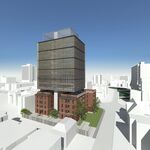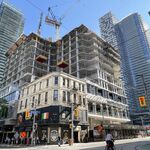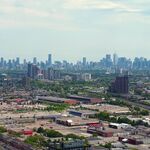A
Antiloop33rpm
Guest
Here is a thought. How about ignoring what other cities are doing and what has been done in the past and actually evaluate what the needs are today? It is one thing to look to other cities around the world for ideas once all the problems are known and there is a good idea as too what a solution might be. Yet the most important of all this discussion, actually figuring out how people travel, too where, and what cost they are willing too pay, for the most part is glossed over in favour of talks of fantasy subway lines and ridiculing the city for not building as fast as Madrid or whatever city will be tossed around in a years time.
Toronto, from my own perspective, needs a solution that will meet these 3 factors. First, it has to be able to cover distances that are going to range 30 or more kilometers, whether crosstown or from the core into the suburbs. Second, it has to be fast and convenient. If the total time of waiting and being on transit is more than 45 minutes or so for one trip, it doesn't seem that the mainstream public is even going to look at transit as a real option unless they are poor or it is for commuting purposes. Third, it has to be cost effective to build. Unless a subway is being built in an area of high ridership, most likely in areas of high density, and can recover most of its costs, it makes no sense to build them. Period. This is not anti-subway, brainwashed by Harris nonsense, it is just simple common sense.
I have no faith anything constructive in terms of transit solutions will be achieved in Toronto in the next decade. Far too many people (citizens, politicians, transit professionals, etc) have their minds stuck on one philosophy and approach to transit and refuse to think otherwise. Until that changes, nothing will happen. And really, its a shame given that there are probably a lot of intelligent, creative people with a lot of good ideas about transit that are based on logic, reason, and rational thinking, but are likely to live in silence until the old guard whithers away.
Toronto, from my own perspective, needs a solution that will meet these 3 factors. First, it has to be able to cover distances that are going to range 30 or more kilometers, whether crosstown or from the core into the suburbs. Second, it has to be fast and convenient. If the total time of waiting and being on transit is more than 45 minutes or so for one trip, it doesn't seem that the mainstream public is even going to look at transit as a real option unless they are poor or it is for commuting purposes. Third, it has to be cost effective to build. Unless a subway is being built in an area of high ridership, most likely in areas of high density, and can recover most of its costs, it makes no sense to build them. Period. This is not anti-subway, brainwashed by Harris nonsense, it is just simple common sense.
I have no faith anything constructive in terms of transit solutions will be achieved in Toronto in the next decade. Far too many people (citizens, politicians, transit professionals, etc) have their minds stuck on one philosophy and approach to transit and refuse to think otherwise. Until that changes, nothing will happen. And really, its a shame given that there are probably a lot of intelligent, creative people with a lot of good ideas about transit that are based on logic, reason, and rational thinking, but are likely to live in silence until the old guard whithers away.




